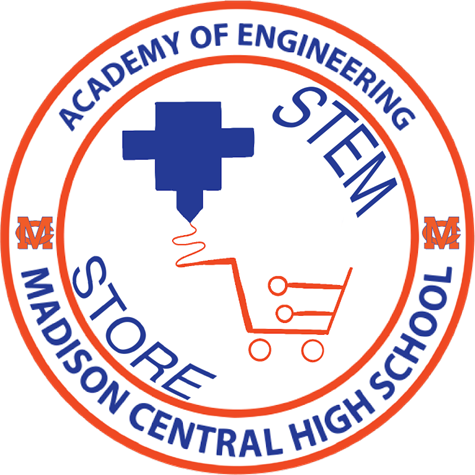Role: Portfolio Manager Date Completed: 2021-2022

Madison Central's Academy of Engineering (AOE) had just obtained specialized equipment such as a laser engraver and 3D printers. Wanting to make a makerspace
using the equipment, the head of the Madison Central's AOE also wanted a website that would provide training manuals
for students to use and to sale products made through the makerspace to raise funds.
The team decided to accept this request for the capstone project. The requirements for our capstone project was that, with six months, the team must choost a real-world problem and
undergo the entire process of project development from research, market analysis, brainstorming, project development and prototyping, and post-analysis.
Link to the Documentation
This capstone project was a valuable experience in that it demonstrated how real-world projects
are developed in the STEM field. Insteaad of developing a regular project that fits within a rubric, we had
to consider real-world problems that we could plausibly create a solution that would have a concrete impact.
The capstone project is broken into components or elements which covers the major steps in project development. Some examples
are research, brainstorming, customer analysis, prototyping, and testing to name some of them. The aspect of breaking a project
into several parts taught me how to streamline a project which makes project development more efficient
as each step essentially builds upon the previous one.
As for my role, I had taken upon the responsbiilty to manage our team's portfolio as I had much experience in project
documentation from previous projects that I have worked on, and I believe that I could better allow my other teammates to focus
on their areas of expertise without being overwhelmed by the documentation.
As the portfolio manager, I kept the documentation up-to-date and up-to-par with the AOE head's standards, assigned my teammates appropriate sections to write sections that they
are best suited for, and articulated the importance of the qualitative and quantitative results of the project from brainstorming, survey feedback, and testing results to
name a few.
In addition, I would also participate in making the website itself such as creating some of the webpages and creating the website's "mind map" which
illustrates the main elements the team will consider for developing the website.
This project has taught me how to systematicly approach developing a product and how to apply it to the real-world, and in addition, it was the first time I have ever created in-depth documentation and implemented customer expectations into a product's design. The experience showcased the how crucial it is for developers to consider consumer preferences and accessibility for a product that will be utilized by others.